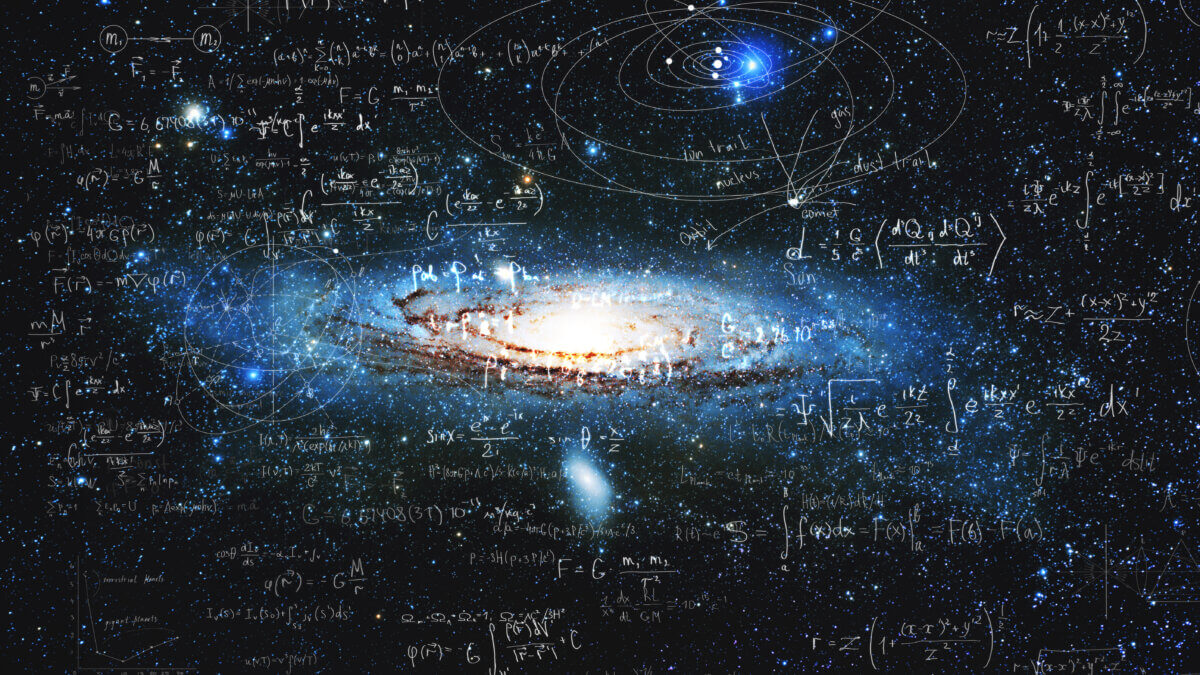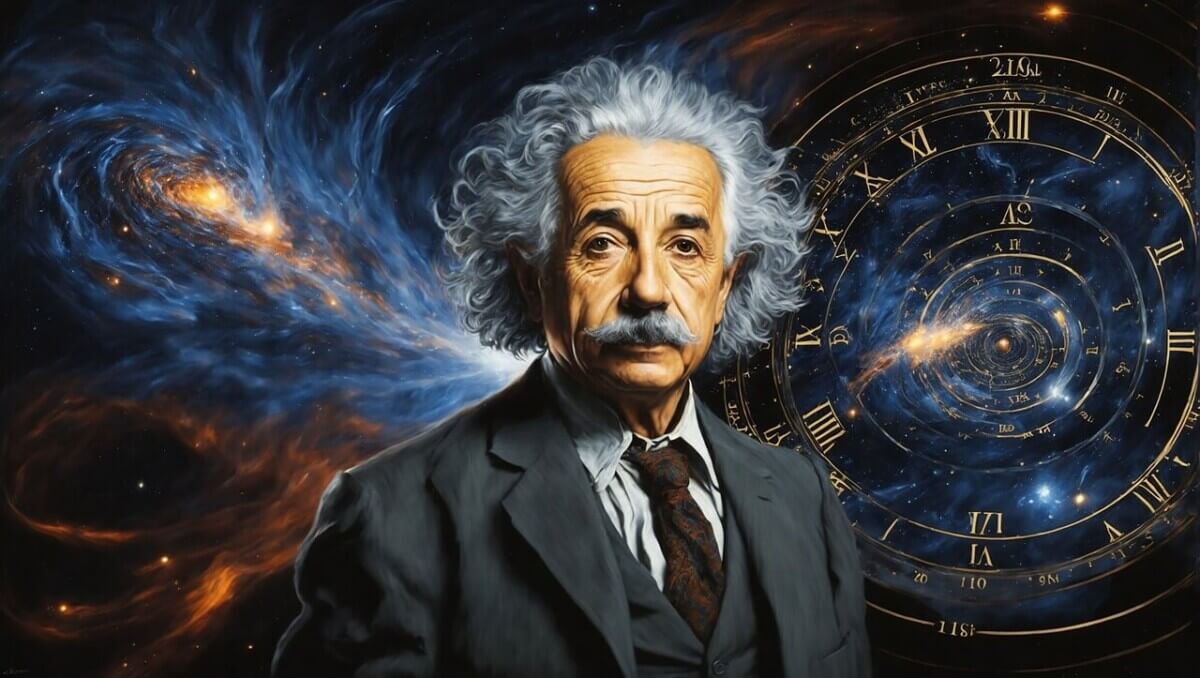
(Image by Lia Koltyrina on Shutterstock)
In a nutshell
- Finnish physicists have developed “unified gravity,” a new theory that describes gravity using the same mathematical framework as the other fundamental forces, potentially solving a century-old physics problem.
- Unlike other quantum gravity approaches, this theory doesn’t require adding new parameters or extra dimensions, working within the physics framework scientists already understand.
- If proven mathematically complete, the theory could help explain phenomena around black holes and the Big Bang—areas where existing physics theories break down.
New ‘unified gravity’ theory makes Standard Model complete for first time ever
AALTO, Finland — Scientists have potentially solved what many consider physics’ most challenging problem – reconciling Einstein’s theory of gravity with quantum mechanics, without adding any new parameters to physics.
In paper published in Reports on Progress in Physics, Mikko Partanen and Jukka Tulkki from Aalto University researchers from Aalto University propose a new theory called “unified gravity” that approaches gravity in a manner surprisingly similar to how physicists understand the other three fundamental forces of nature.
The theories that explain the other forces—electromagnetism, the weak nuclear force, and the strong nuclear force—all share a common mathematical structure. But gravity has always been the odd one out.
A Grand Gravitational Puzzle In Physics
For nearly a century, physicists have struggled to find a way to make Einstein’s theory of gravity, general relativity, compatible with quantum mechanics. These two pillars of modern physics refuse to work together mathematically, creating a roadblock to understanding the most extreme conditions in our universe, like the interiors of black holes or the moment of the Big Bang.
The researchers found a way to describe gravity using compact mathematical structures called “U(1) symmetries” instead of the infinite-dimensional structures previously thought necessary. This means gravity might finally fit into the Standard Model of particle physics – our best explanation for how particles and three of the four forces behave.
“The main idea is to have a gravity gauge theory with a symmetry that is similar to the Standard Model symmetries, instead of basing the theory on the very different kind of spacetime symmetry of general relativity,” says Partanen, the study’s lead author, in a statement.

This new approach is quite remarkable in that it potentially allows all four fundamental interactions to be described within a single, coherent theory for the first time.
Unlike other approaches to quantum gravity, such as string theory, which introduces numerous extra parameters and dimensions, this approach works within the physics framework scientists already understand. The team demonstrates their theory matches Einstein’s classical gravity predictions while tackling the theoretical problems that have frustrated physicists for generations.
Quantum Gravity Theory Put To Test
Testing quantum gravity has always been challenging. Gravity is so much weaker than other forces that detecting quantum gravity effects requires extremely sensitive measurements beyond current technology.
“A quantum theory of gravity is needed to understand what kind of phenomena there are in cases where there’s a gravitational field and high energies,” says Partanen. “Those are the conditions around black holes and in the very early universe, just after the Big Bang—areas where existing theories in physics stop working.”
The researchers analyzed how their theory behaves in quantum calculations, showing it appears “renormalizable” – meaning the theory stays mathematically consistent when describing particles at extremely high energies, a property that previous quantum gravity theories have lacked.
“If renormalization doesn’t work for higher order terms, you’ll get infinite results. So it’s vital to show that this renormalization continues to work,” explains Tulkki. “We still have to make a complete proof, but we believe it’s very likely we’ll succeed.”
The Road Ahead
If confirmed, this work could solve so many mysteries behind black holes, the early universe, and perhaps even answer questions about our cosmos’s ultimate fate. It might also help resolve contradictions that arise when applying quantum principles to gravity.
“If this turns out to lead to a complete quantum field theory of gravity, then eventually it will give answers to the very difficult problems of understanding singularities in black holes and the Big Bang,” Partanen says.
Still, many physicists will likely remain cautious, as promising approaches to quantum gravity have appeared before only to hit roadblocks later.
Partanen concurs there are still challenges ahead, but with time and effort he expects they’ll be overcome. “I can’t say when, but I can say we’ll know much more about that in a few years.”
The excitement stems from the possibility that after nearly a century, we might finally understand all fundamental forces through a single, coherent framework – fulfilling Einstein’s unfinished dream.
“Like quantum mechanics and the theory of relativity before it, we hope our theory will open countless avenues for scientists to explore,” Partanen concludes.
Paper Summary
Methodology
The researchers developed a new approach to unify gravity with quantum field theory by introducing the concept of a “space-time dimension field” and using a mathematical framework called “eight-spinor formalism.” Rather than treating gravity as fundamentally different from other forces, they represented gravity using four compact symmetry groups (similar to those used in the Standard Model) rather than the infinite-dimensional structures typically used in gravity theories. The researchers derived a complete set of Feynman rules for their theory and performed calculations to show that it reproduces known gravitational interactions at the classical level while potentially solving long-standing quantum problems.
Results
The study found that their “unified gravity” theory successfully reproduces the classical predictions of Einstein’s general relativity while potentially solving the quantum problems that have plagued previous attempts to quantize gravity. The researchers showed that their theory is “renormalizable” at one-loop order (a technical requirement for a well-behaved quantum field theory) and that it doesn’t introduce any new physical parameters beyond those already known. They demonstrated how their approach can correctly predict radiative corrections to the Coulomb and Newtonian potentials, and how it could be extended to include all the particles and interactions in the Standard Model.
Limitations
The researchers acknowledge several remaining challenges with their approach. First, there’s a severe lack of experimental data on quantum gravity effects due to the weakness of gravitational interactions. Second, while they proved renormalizability at one-loop order, they haven’t yet proven it works at all orders, which would be necessary for a complete theory. Third, the theory’s behavior in the non-perturbative regime (where the gravitational force becomes very strong) remains to be fully understood. Finally, the theory will need to make unique, testable predictions that can be verified experimentally to gain widespread acceptance.
Funding and Disclosures
The research was funded by the Research Council of Finland under Contract No. 349971.
Publication Information
The paper titled “Gravity generated by four one-dimensional unitary gauge symmetries and the Standard Model” was authored by Mikko Partanen and Jukka Tulkki from Aalto University in Finland and published in Reports on Progress in Physics in May 2025.







